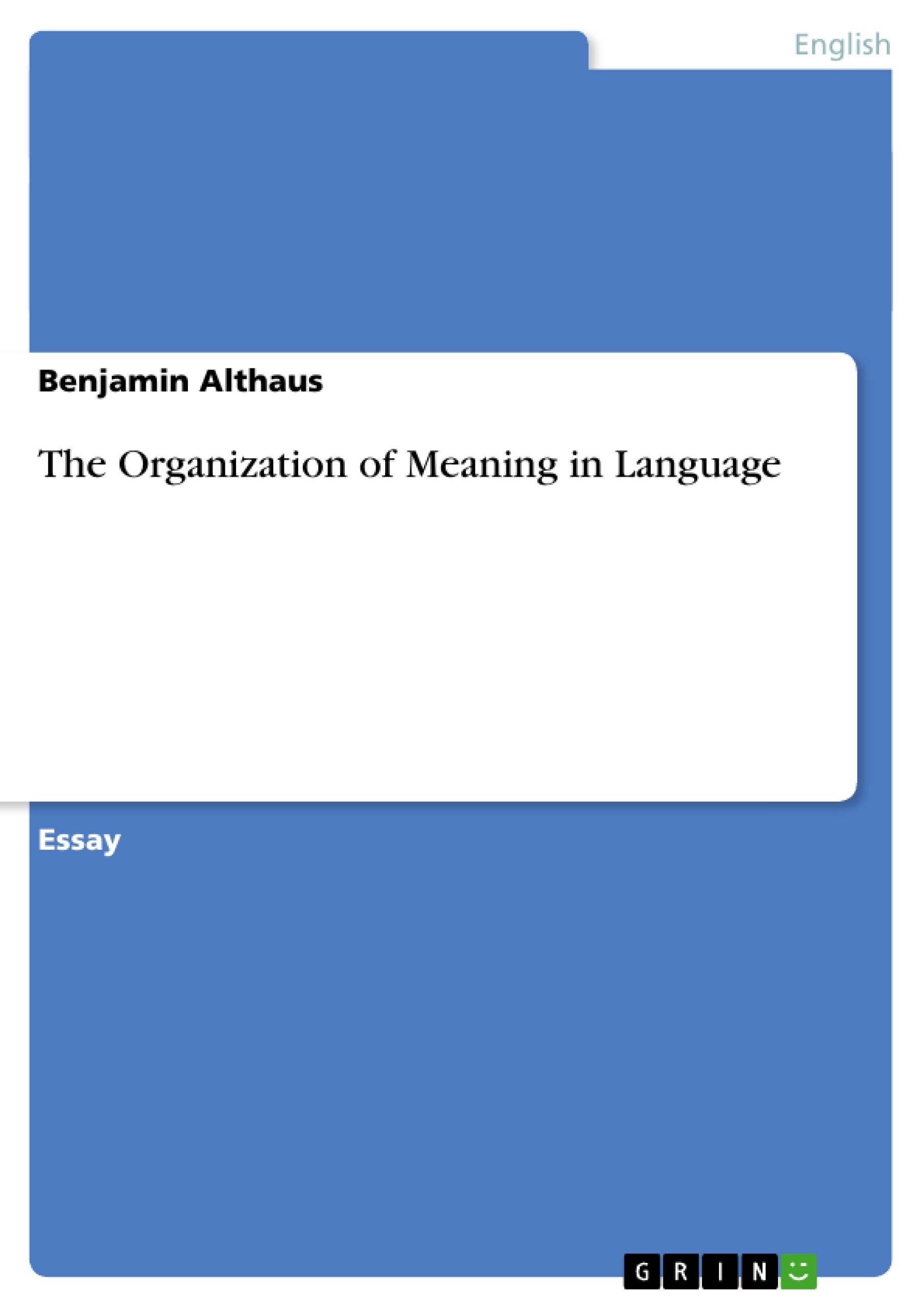Language enables humans to convey and exchange information about the world they live in. A person’s interpretation of the real world is represented by the conceptual structure in the head. Concepts are “organized bundles of stored knowledge which represent an articulation of events, entities, situations, and so on” (Cruse 2004: 125). In order to interact with the world successfully one must have a concept of its structure and meaning, this concept can be represented by human language. This ability is species specific, i.e., only humans can manipulate the world symbolically. Furthermore symbolic behaviour is species uniform, which means that all humans have the ability for it. Children seem to acquire a language automatically according to a certain pattern. They learn a language on the basis of cultural context and without real instruction: linguistic ability appears to be a genetic predisposition of the human race. It is a fundamental aspect of our life as, our understanding of the world is “imposed on us by our language’s distinction” (Pinker 1994: 154). This essay will explain how meaning of language is organized and how it is reflected in the structure of language. I will first deal with the nature of the sign and then go on to explain how the meaning of complex signs is built up by word formation processes. The last part of the essay will investigate some of the processes which are involved when we categorize the world. [...]
Inhaltsverzeichnis (Table of Contents)
- The Nature of the Sign
- Word Formation Processes
- Derivation
- Compounding
- Categorization
Zielsetzung und Themenschwerpunkte (Objectives and Key Themes)
This essay aims to explain how the meaning of language is organized and how it is reflected in the structure of language. It explores the nature of the sign, word formation processes, and categorization.
- The nature of signs and their relationship to meaning
- Word formation processes, including derivation and compounding
- The role of categorization in understanding the world
- The relationship between language and thought
- The importance of shared categories for communication
Zusammenfassung der Kapitel (Chapter Summaries)
- The Nature of the Sign: This section discusses the concept of the sign as a pairing of a sound image and its meaning. It highlights the arbitrary nature of this relationship and the role of convention in language use. It also explores the distinction between concrete and abstract concepts.
- Word Formation Processes: This section examines how complex words are formed through processes like derivation and compounding. It analyzes the role of affixes in modifying word meaning and word class. The concept of secondary motivation is introduced, explaining how the meaning of complex signs can be derived from the meaning of their constituents.
- Categorization: This section investigates the process of categorization as a cognitive mechanism for understanding the world. It explains how categorization allows us to access stored knowledge and deal effectively with new experiences. The distinction between [TOKEN] and [TYPE] concepts is discussed, highlighting their role in categorization.
Schlüsselwörter (Keywords)
This essay focuses on key concepts like sign, meaning, word formation, derivation, compounding, categorization, [TOKEN] and [TYPE] concepts, and the relationship between language and thought. It explores how these concepts contribute to our understanding of language and its role in communication and cognition.
- Quote paper
- Benjamin Althaus (Author), 2005, The Organization of Meaning in Language, Munich, GRIN Verlag, https://www.grin.com/document/40583



